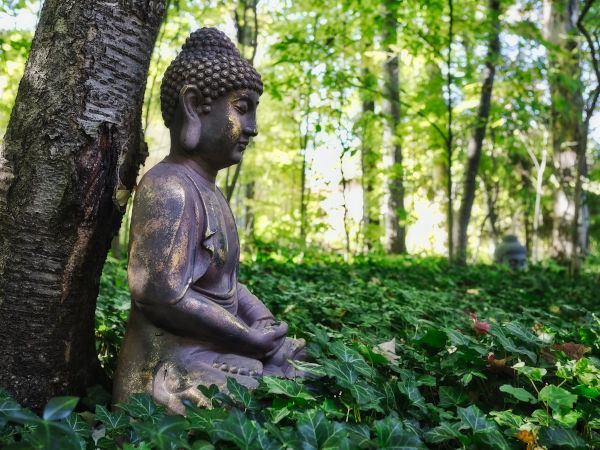Social Justice is a Vision, Not a Precondition; Decolonization Must Start From the Heart
Institutions have been increasingly concerned about dismantling systemic oppression and encouraging inclusivity and equity. Whether the motive behind this undertaking is to repair the damages historically imposed on marginalized groups or to nurture a more holistic world through innovations in knowledge, universities have very much become forerunners in contemporary social justice movements.
However, despite the efforts of changemakers, faulty paradigms in social and environmental ethics, as well as in knowledge production, keep us collectively cycling through the same colonial-based mindsets and behaviours. Until we recognize the hypocrisy of these actions, often chosen subconsciously, the compassionate, sustainable, and just world we endeavour to create can only be a fantasy.
Edit: To clarify, my use of the terms white guilt and BIPOC in this post is meant as a way to explain the dysfunction of our social systems. To be honest, I find the phrase white guilt to be uncomfortably racist, and BIPOC, in the context of a social justice movement maintained by an institutionalized hegemony, inevitably creates a binary of good/bad and victim/perpetrator. Neither references are wholistic representations of society and are the results of collective ego identification. To read more about how guilt is associated with the ego, read my post on A Course in Miracles. The desire for social justice is a symptom of our collective trauma and not the solution. Social justice is a painful topic because of past pain, but even more so because seeking justice in an unjust world inevitably asks us to avoid confronting the spiritual purpose of pain, which is to learn the monumental human lesson of acceptance and forgiveness.
Mindset Flaws
Below are four mindset flaws in the contemporary social justice movement that keep us collectively in the same loop of injustice, oppression, and disharmony.
1. Social justice is a “want” not a “should.”
Moral judgements for social justice are not logically sound.
To bring fantasy into reality, we need to first recognize that social justice is a vision, not a propriety. That means that moral judgements of what is “right” or “wrong”, which is the most common way ethics is practised in society, has no reasonable foundation. To make moral judgements, a conceptual hierarchy needs to be self-imposed by seemingly righteous “ethical advocates” towards those perceived as “ethical delinquents”.
Similarly, we find in the history of environmental ethics the tradition of privileged individuals assigning self-authority to determine the value and moral standing of those who have wrestled with demonstrating value within a hegemonic system, be it another race, gender, species, or habitat. But if ethical advocates are fighting for equality within a social or ecological system, is it not a hypocrisy for them to self-impose ethical superior over another being?
If we look at the history of human civilization, the idealised equitable society that most activists envision does not exist. To the contrary, we might even find a pattern suggesting that within human nature is the tendency to create systems of injustice. Therefore, to truly achieve social and environmental justice, we need to acknowledge that we are working to manifest a new vision into the world. This social change requires significant paradigm shifts at individual and collective-systemic levels.
2. Striving for equality is part of dismantling the system.
Fighting for equity instead is accepting the limitations of the hegemonic system.
Recognizing the difference between equality and equity has been a concern for social justice advocates in recent decades. Acknowledging that social systems have been and continue to be unfair, the concept of equity is used to counterbalance the bias in the system. This may mean providing services that meet the demands of a more diverse group or implementing policies specifically to benefit a marginalized group.
However, there is somewhat of a cognitive dissonance in trying to separate the two concepts. Underlying the pursuit for social justice (and equity) is, nevertheless, equality.
Not everyone can become doctors, climb Mount Everest, live to 100 years old, or own a Porsche, but we still envision a world where despite our privileges and lacks, all human beings are EQUAL in intrinsic VALUE. Using the metaphor of hegemonic privilege as a gated community, you know that there is a difference between feeling validated when the gates of the system have finally opened up for you and feeling worthy even without needing to enter those estates of the hegemony.
The examples I gave may be arguably too grand since many people in our society barely have their basic needs met. But if we need the principles of equity to meet basic human needs, then what we’re really seeing is a system that needs complete overhaul. Counterbalancing a flawed system is sort of like making up an expense at the end of the year to reconcile incomplete bookkeeping records or continuing to knit when you’ve noticed a missed stitch earlier in a crafting project.
Trying to build an equitable system out of a system of injustice, perhaps, can be a steppingstone to that powerful vision of a just society, or be the only way to provide people with their basic needs, but it can also be the act of settling for a mediocre society far different than what we truly want in our hearts. Equality starts as a commitment to a mindset before anything else. This is the time to ask what kind of world we really want to build.

3. The hegemony is not out-there. We are the creators of hegemonic narratives.
Sometimes social justice initiatives are mistakenly built from hegemony.
The next step is to recognize that the hegemony is not out-there, completely controlled by other people. Social justice discourse often comes with an archetypal enemy: the white supremacist, the greedy capitalist, the incompetent politician. Yet, this archetypal enemy is not the same as the hegemonic system or its narratives.
A mental error is to believe that narratives of injustice remain consistent, but in a globalized society, we are inevitably part of the hegemonic system. If we are still “operating for” the old paradigm, then whatever we disseminate becomes the hegemonic narrative. For example, while most social justice activists are still fighting the old narrative of “white privilege”, the hegemonic narrative of today’s institutions have shifted to…what could colloquially be called “white guilt.”1
“Imperialist nostalgia” is anthropologist Renato Rosaldo’s more academic and inclusive term for this condition: the hypocritical and self-inflicted mourning created by cultural dominance. Imperial nostalgia is a narrative represented by the colonizer as the search for the “pure” and “simple” “elsewhere” (Kaplan 1996). From my perspective, it is a coping mechanism to bypass difficult feelings of guilt, shame, and regret. Caren Kaplan describes:
A person kills somebody, and then mourns the victim. In more attenuated form, somebody deliberately alters a form of life, and then regrets that things have not remained as they were prior to the intervention. At one more remove, people destroy their environment, and then they worship nature. (34)
From Indigenous-Settler decolonization, to anti-racism, to climate change, social and environmental justice movements have been intensifying in institutions, as protocols, practices, and educational initiatives. The irony of all this social awareness, however, is not a more equitable world, but rather, “white guilt” or “imperial nostalgia” at play. When you have the hegemonic system imposing a narrative on society, whether the recipients are White, Black, Indigenous, or other People of Colour, no matter how righteous and morally correct the narrative may seem, the act is still one of oppression and colonization.
Each individual person has the inborn freedom to perceive and relate to the world in their own way, but the hegemonic narrative denies them of this sovereignty. This is the time to ask ourselves if we’ve been unknowingly disseminating this narrative of oppression and denying someone else’s truth.
4. Decolonization is a process of returning to our hearts.
Decolonization is not the same as institutional Indigenization which perpetuates the Indigenous-Settler binary.
Decolonization, perhaps, is the closest social justice term modern society has adopted to describe our abstract social agenda for collective healing and regeneration. Yet, despite abundant discourse, strategies, and initiatives, the exact process for decolonization remains unclear. That is because much of decolonization is an inside job.
However, the process of decolonization in institutions, including academia, has most often been mistakenly made equivalent to Indigenization or promoting Indigenous ways of knowing. An association fallacy exists here because the perspective is taken solely from the legacy of the colonizer, specifically, the hegemonic system of institutional knowledge production, and thus, is an example of imperialist nostalgia. The real association between Indigenous knowledge and decolonization is the need to repair our collective human relationship with nature, starting with the illusion of landownership, a discussion beyond the scope of this post.
By disseminating this narrative of Indigenization as a decolonial project, the hegemony upholds its colonizing power over all parties not directly involved in the original historical events (e.g., descendants from Indigenous, Settler, and non-Settler immigrant cultures), and ironically, maintains the binary within Indigenous-Settler discourse. In this narrative, we are forced to ignore the complexities of our experiences and identify with either us or them (i.e., the perpetrator or the victim). Accordingly, the rise of BIPOC as a relevant term is not a surprise, since a way was needed for non-white people to escape self-identifying with the guilt of the hegemony.
Decolonization is non-binary in its essence. We cannot erase history (or pretend that backtracking is the same as reconciliation), so we must learn from it. Or as philosopher George Santayana famously said, we are otherwise “doomed to repeat it.” We can easily find the patterns of history repeating themselves over again and again (and sometimes it takes more reflection such as in the case of imperialist nostalgia described above). But our failed attempts to learn from our own history as a species isn’t because we are unteachable. Rather, it is because of our fear to look into the mirror of what is within: repressed pain from the past, unrealized dreams of a better future, and old narratives that keep us from believing those dreams.
Healing pain and finding hope requires us to heal our hearts. Therefore, decolonization in its truest sense, means decolonizing our hearts from our thinking minds.2 Modernity’s embrace of René Descartes’ mind-body dualism in his iconic quote “I think, therefore I am” has been foundational to the colonization of the heart. Academic traditions have played a significant role in upholding this colonization, specifically, by prioritizing empirical, institutionalized, and detached forms of knowledge over the wisdom of personal intuition, lived experience, and ancient or esoteric knowledge.
Conclusion: our experiences cannot be falsified by oppressive systems, only temporarily repressed
The rejection of our basic human need to trust our inner knowing, to be vulnerable in our feelings, and to have faith in the unknown, has created a collective pathos of unworthiness and not-belonging, setting the groundwork for systems of hierarchy, commodification, and divisiveness.
Although narratives can bring oppression, the opposite is also true. Biases can be broken through the language of stories, particularly those stories that resonate first with the heart before reaching the mind. The momentum of paradigm shifts come from these stories because our experiences cannot be falsified by oppressive systems; they can only be temporarily repressed. When we liberate the truth of our individual experiences into the world, we are disseminating the truest seeds of equality, belonging, and worthiness.
Therefore, decolonization is a choice to give our minds the opportunity to make amends with our hearts. Through this reconciliation, we find a broader meaning for inclusivity: embracing and healing our most common identity of being human—resilient yet vulnerable, independent yet interconnected.
- My use of the terms “white guilt” and BIPOC in this post is meant only as a way to explain the dysfunction of our social systems. To be honest, I find “white guilt” to be uncomfortably racist, and BIPOC, in the context of institutionalized social justice as a hegemonic and binary practice, to be inevitably associated with victimhood. Neither references are healthy representations of society in my opinion. ↩︎
- This theory is influenced by Eastern philosophy and ecopsychology, particularly James Hillman’s essays “The Thought of the Heart” and “Anima Mundi: The Return to the Soul of the World” (published in The Thought of the Heart and Soul of the World, Dallas: Spring Publications, 1981). ↩︎
References:
Kaplan, Caren. “‘This Question of Moving’: Modernist Exile / Postmodern Tourism,” in Questions of Travel: Postmodern Discourses of Displacement. Durham, NC: Duke University Press, 1996.






